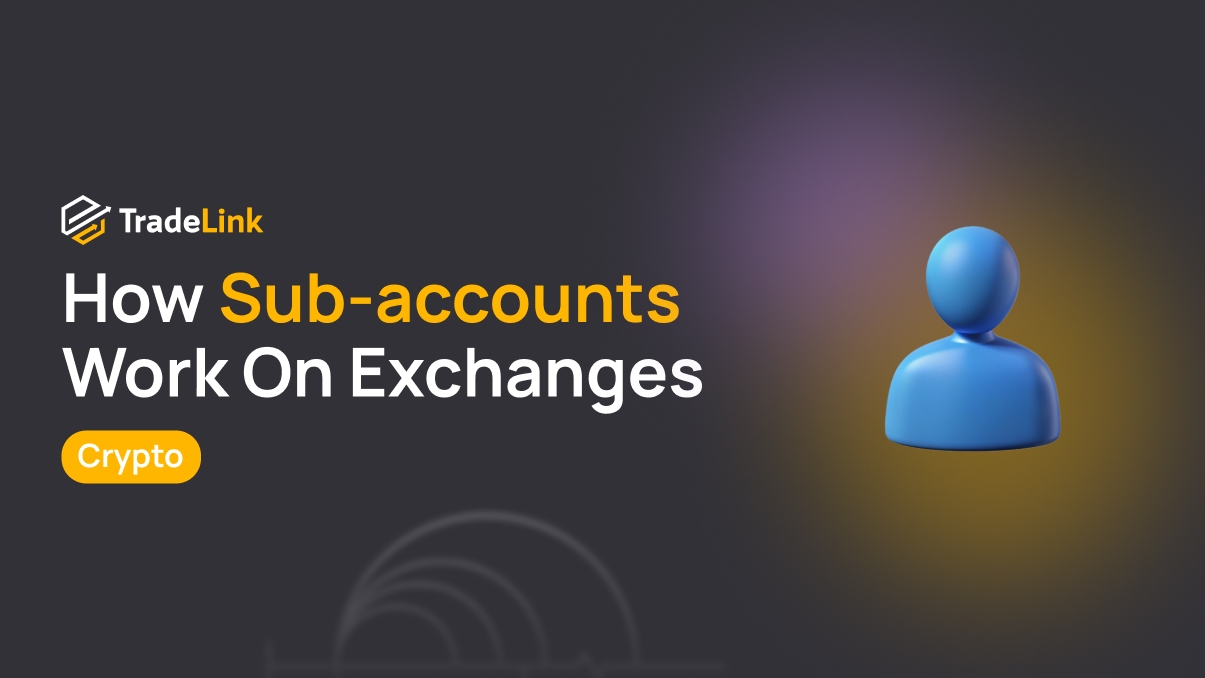How Sub-accounts Work on Exchanges and Why Traders Need Them

Contents
- Introduction
- What is a sub-account on an exchange
- Main functions of sub-accounts
- Why traders need sub-accounts
- Advantages of sub-accounts on a crypto exchange
- How to create and configure a sub-account
- Conclusion
Introduction
New tools are emerging on cryptocurrency exchanges that help traders manage their capital more efficiently. One of these functions is sub-accounts. They enable the separation of trading activities, division of access, and reduction of risks. This feature is in demand among both private traders and investment teams, which is why interest in sub-accounts on crypto exchanges continues to grow.
What is a sub-account on an exchange

A sub-account is an additional trading profile created within a main account. The user retains one primary account that controls all processes, and within it, several sub-accounts can be opened.
The key difference is that the primary account manages the overall balance and security settings, while sub-accounts function as separate working profiles for trading or asset management. As a result, a trader can distribute capital across different tasks and strategies without the need to create new accounts.
Main functions of sub-accounts
Function | What it provides | Why is it used |
Balance separation | Separate wallets for each strategy | Risk management and result tracking |
Access settings | Rights granted only for viewing or trading | Teamwork without giving complete control |
Trading as from a separate profile | Ability to use the full functionality of the exchange within a sub-account | Convenience in running different strategies |
Risk management | Limiting losses within a single sub-account | Reducing the likelihood of significant losses |
Thus, sub-accounts most often become a function that improves the efficiency of capital management.
Why traders need sub-accounts

Sub-accounts help traders build a more flexible and secure system of work. Their main tasks can be divided into several areas:
-
Access separation. Sub-accounts enable sharing rights without relinquishing complete control. For example, the owner can grant a trader the ability to make transactions but prohibit withdrawals. An analyst or assistant may have access to statistics and reporting but not to trades. This approach makes teamwork more transparent and secure.
-
Balance management. Funds can be distributed across different strategies, with a portion allocated for short-term trading and another for long-term investments. This helps control risks and avoid mixing the results of other methods. If necessary, balances can be quickly reallocated in response to changing market conditions.
-
Security and control. Sub-accounts improve overall protection. The owner can restrict API key permissions, thereby reducing the risk of hacks or improper access via third-party services. Mistakes made in one profile do not affect the others, which reduces the likelihood of significant losses.
Advantages of sub-accounts on a crypto exchange

Sub-accounts provide traders and investors with greater control and flexibility. This feature helps separate capital, manage risks, and create a workflow that adapts to the user’s specific goals.
For private traders
Private traders use sub-accounts to divide their funds and conveniently analyse strategies. For example, one sub-account may be dedicated to long-term investments, while another is used for active intraday trading. This approach makes it clear which strategy yields the best results. Additionally, a sub-account enables testing new ideas without risking the entire capital.
For teams and funds
In a professional environment, sub-accounts are especially valuable. Teams and funds can distribute roles: traders open positions, analysts assess the market, and accountants handle reporting. At the same time, all actions are recorded in a unified system, which increases transparency and simplifies oversight.
Moreover, modern crypto investment platforms provide access to algorithmic indexes and strategies built from the decisions of top-performing traders. Using such tools in conjunction with sub-accounts enables teams to test different approaches more quickly and manage risks without combining all capital in a single wallet.
How to create and configure a sub-account
The process of opening a sub-account on a crypto exchange is generally straightforward. The user logs into the main account, finds the sub-account management section, sets a name, parameters, and starting balance. In most cases, the system provides flexible settings, allowing the sub-account to be ready for use immediately after it is created.
Access rights configuration
One of the key advantages is the ability to choose the level of access:
Access level | Capabilities | Limitations | Best suited for |
View | Access to balance, statistics, and trade history | No rights to trade or withdraw funds | Analysts, accountants, assistants |
Trade | Ability to place orders, open and close positions | No right to withdraw funds | Traders, strategy managers |
Limited operations | Custom settings: access to specific assets or sections | Depends on established parameters | Teams with divided roles, fund managers |
As a result, the account owner gains a flexible tool for dividing responsibilities and reducing risks.
API integration
Sub-accounts can be connected to external services using API keys. These digital keys allow trading automation and integration with bots or analytics platforms. At the same time, exchanges typically offer the option to restrict API rights, such as enabling trading without withdrawals or granting access only to specific data. This mechanism enhances security and makes the workflow more convenient.
Conclusion
Sub-accounts on a crypto exchange are a function that, in most cases, increases the efficiency of capital management. They allow dividing access among users, controlling balances, and enabling automation through APIs.
At the same time, sub-accounts help both private traders and professional teams establish a flexible and transparent workflow. As a result, utilising this function reduces risks and enhances the quality of capital management, which is particularly important in the fast-paced cryptocurrency market.